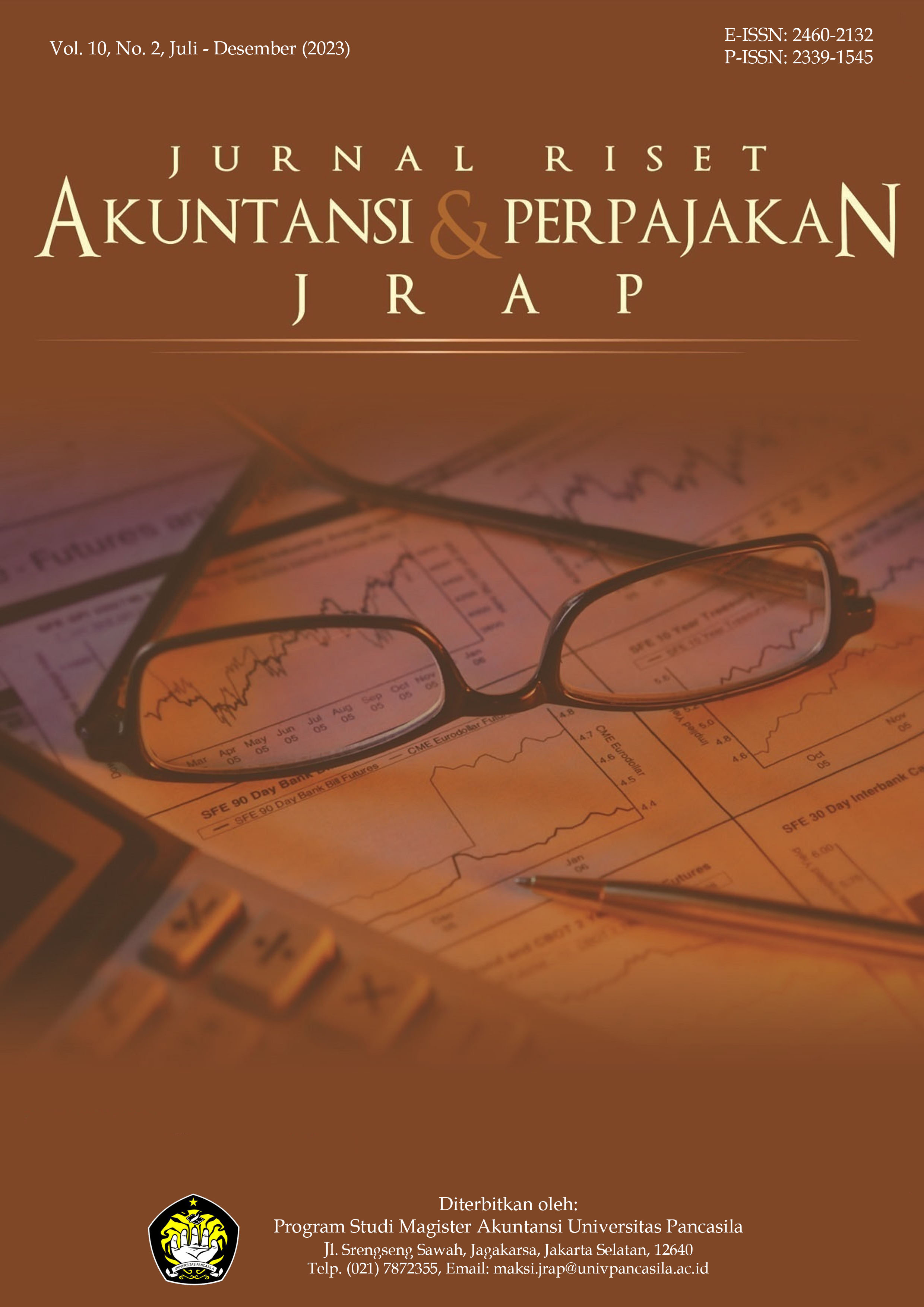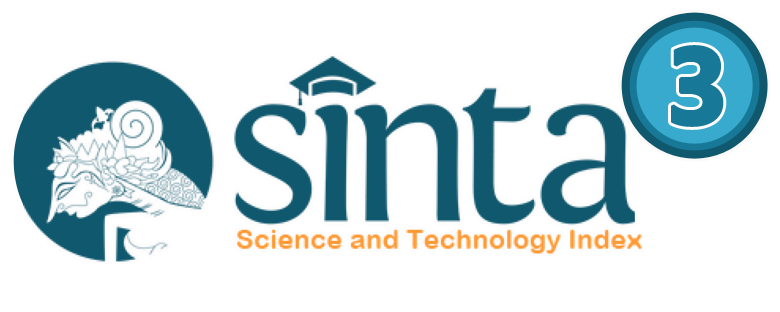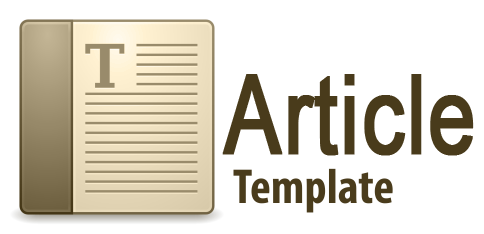The Role of Control Environment (CE) in the Public Sector in Preventing Fraud: A Literature Study
DOI:
https://doi.org/10.35838/jrap.2023.010.02.22Keywords:
Control Environment, Corruption, Fraud, Internal Control, Public SectorAbstract
This paper aims to conduct a literature study on the role of the CE in preventing fraud. Undoubtedly, weak internal controls (IC) and CE are the factors that cause various cases of fraud to occur, such as corruption, collusion, bribery, and various unethical behaviors.. The COSO IC Framework and previous studies explicitly state that the CE is the primary basis for building a strong IC system, and the leader or supervisor is a central figure in realizing the formation of a strong CE. However, from several previous studies, not much has examined the role of the CE on the effectiveness of ICs in preventing fraud. The method used is to enter keywords in the search engine, consisting of "corruption, fraud, CE, corruption in the public sector, unethical behavior, public sector". Databases like Scopus, Emerald, Google Scholars, Scihub, and Proquest are utilized as search tools to discover pertinent research in this specific field. The results show that several previous studies using quantitative and qualitative methods to examine the effectiveness of CE and the role of leaders in creating a strong CE to prevent and reduce fraud. The study contributes general knowledge and practical insights of the role of CE and the role of a leader to enforce CE.
Downloads
References
Amyulianthy, R., Astuti, T., Wahyudi, A., Harnovinsah, Sopanah, A., & Sulistyan, R. B. (2023). Diamond Fraud Determinants: An Implementation of Indonesia’s Wisdom Value. International Journal of Professional Business Review, 8(8), e02938. https://doi.org/10.26668/businessreview/2023.v8i8.2938
Badara, S., & Saidin, S. Z. (2013). Impact of The Effective Internal Control System on the Internal Audit Effectiveness at the Local Government Level. Journal of Social and Development Sciences, 4(1), 16-23. https://doi.org/10.22610/jsds.v4i1.731
Bernardi, R. A. (1994). Fraud Detection: The Effect of Client Integrity and Competence and Auditor Cognitive APIP in Building Strong Tone at The Top as An Effort To Prevent Corruption in Indonesia. Asia Pacific Fraud Journal, 4(2), 68-84. https://doi.org/10.21532/apfjournal.v4i2. 104
Chalmers, K., Hay, D., & Khlif, H. (2019). Internal Control in Accounting Research: A Review. Journal of Accounting Literature, 42, 80–103. https://doi.org/10.1016/j.acclit.2018.03. 002
Changchit, C., Holsapple, C. W., & Madden, D. L. (2001). Supporting Managers’ Internal Control Evaluations: An Expert System and Experimental Results. Decision Support Systems, 30(4), 437-449. https://doi.org/10.1016/S0167-9236(00)00127-5
Chow, C. W., McNamee, A. H., & Plumlee, R. D. (1987). Practitioners Perceptions of Audit Step Difficulty and Criticalness-Implications for Audit Research. Auditing-A Journal of Practice & Theory, 6(2), 123-133.
Christopher, P. A. (2003). Dickinson Technologies, Inc.: Assessing Control Environment and Fraud Risk. Issues in Accounting Education Teaching Notes, 18(1), 2. https://doi.org/10.5555/1558-7983-18.1.2
Cohen, J. R., & Hanno, D. M. (2000). Auditors’ Consideration of Corporate Governance and Management Control. Auditing: A Journal of Practice & Theory, 19(2), 133–146. https://doi.org/10.2308/aud.2000.19.2.133
COSO. (2013). Internal Control-Integrated Framework. Retrieved.
Daniel, E., & Warsiah. (2009). Metode Penulisan Kary a Ilmiah. Laboratorium PKn Universitas Pendidikan Pancasila.
Doyle, J., Ge, W., & McVay, S. (2007). Determinants of Weaknesses in Internal Control over Financial Reporting. Journal of Accounting and Economics, 44(1–2), 193-223. https://doi.org/10.1016/j.jacceco.2006.10.003
Feng, M., Li, C., McVay, S. E., & Skaife, H. (2015). Does Ineffective Internal Control over Financial Reporting affect A Firm’s Operations? Evidence from Firms’ Inventory Management. Accounting Review, 90(2), 529-557. https://doi.org/10.2308/accr-50909
Ge, W., & Mcvay, S. (2005). The Disclosure of Material Weaknesses in Internal Control after The Sarbanes-Oxley Act. Accounting Horizons, 19(3), 137-158. https://doi.org/10.2308/acch.2005.19.3.137
Harahap, L., & Isgiyarta, J. (2023). Corruption and Fraudulent Activities in Higher Education: A Study of Literature. Jurnal Manajemen (Edisi Elektronik), 14(1), 217-237. https://doi.org/10.32832/jm-uika.v14i1.11239
Haskins, M. E. (1987). Client Control Environments: An Examination of Auditors’ Perceptions. The Accounting Review, 62(3), 542–563. http://www.jstor.org/stable/ 247576
Ilyas, S., Sutisna, D., & Saudi, M. H. (2021). The Role of Control Environment In Developing Internal Control Effectiveness and Good Corporate Goverment. Turkish Journal of Computer and Mathematics Education, 12(8), 276-285.
Isgiyarta, J., Indayani, I., & Budiyoni, E. (2018). Studi Tentang Teori GONE dan Pengaruhnya Terhadap Fraud dengan Idealisme Pimpinan sebagai Variabel Moderasi: Studi Pada Pengadaan Barang/Jasa di Pemerintahan. Jurnal Dinamika Akuntansi Dan Bisnis, 5(1), 31-42. https://doi.org/10.24815/jdab.v5i1.8253
Iswahyudi, & Darminto, D. P. (2019). Efektivitas Pengendalian Intern Piutang Usaha dengan Menggunakan Pendekatan COSO. Jurnal Riset Akuntansi & Perpajakan (JRAP), 6(2), 31-44. https://doi.org/10.35838/jrap.2019.006.02.15
Jokipii, A. (2010). Determinants and Consequences of Internal Control in Firms: A Contingency Theory-Based Analysis. Journal of Management and Governance, 14(2), 115-144. https://doi.org/10.1007/s10997-009-9085-x
Kgomo, B., & Plant, K. (2015). Dimensions for The Assessment of Ethical Leadership: An Internal Audit Perspective. Southern African Journal of Accountability and Auditing Research, 17(2), 201585–201594. http://0-journals.co.za.oasis.unisa.ac.za/docserver/fulltext/sajaar/17/2/sajaar_v17_n2_a8.pdf?expires=1523704436&id=id&accname=58010&checksum=3D8932072BC77B6BF4E422B97417A71C
Khersiat, O. M. (2020). The Efficiency of Applying The Internal Control Components Based on COSO Framework to Transparently Carry Out Tasks and Services, Ensure Integrity and Enhance Quality and Efficiency: Case Study-The Greater Amman Municipality. International Journal of Financial Research, 11(2), 371-381. https://doi.org/10.5430/ ijfr.v11n2p371
Kizirian, T. G., & Mayhew, B. W. (2005). The Impact of Management Integrity on Audit Planning and Evidence. Auditing: A Journal of Practice & Theory, 24(2), 49-67. https://doi.org/10.2308/aud.2005.24.2.49
Kreutzfeldt, R., & Wallace, W. A. (1990). Control Risk Assessments-Do They Relate to Errors? Auditing-A Journal of Practice & Theory, 9, 1–26.
Krishnan, J. (2005). Audit Committee Quality and Internal Control: An Empirical Analysis. Accounting Review, 80(2), 649–675. https://doi.org/10.2308/accr.2005.80.2.649
Lamboglia, R., & Mancini, D. (2021). The Relationship Between Auditors’ Human Capital Attributes and The Assessment of The Control Environment. Journal of Management and Governance, 25(4), 1211-1239. https://doi.org/10.1007/s10997-020-09536-8
Lašáková, A., & Remišová, A. (2019). The Relationship Between Demographic Factors and Managers’ Perception of Unethical Tone at The Top. Journal of Management Development, 38(1), 25–45. https://doi.org/10.1108/JMD-07-2018-0213
Lee, H. A. (2019). The effect of The Internal Control Environment on The Value Relevance of Earnings. Investment Management and Financial Innovations, 16(2), 182-194. https://doi.org/10.21511/imfi.16(2).2019.16
Medcraft, G. (2016). Tone from the top: Influencing Conduct and Culture. Law and Financial Markets Review, 10(3), 156–158. https://doi.org/10.1080/17521440.2016.1244421
Mendes de Oliveira, D. K., Imoniana, J. O., Slomski, V., Reginato, L., & Slomski, V. G. (2022). How do Internal Control Environments Connect to Sustainable Development to Curb Fraud in Brazil? Sustainability (Switzerland), 14(9). https://doi.org/10.3390/ su14095593
Nakashima, M., & Ziebart, D. A. (2016). Tone at The Top and Shifts in Earnings Management: Evidence from Japan. Journal of Forensic & Investigative Accounting, 8(2), 288-324.
Noland, T. G., & Metrejean, E. (2013). The Importance of The Control Environment: Expense Account Fraud at Blue Grass Airport. Journal of Business & Economics Research (JBER), 11(2), 97. https://doi.org/10.19030/jber.v11i2.7622
Opstrup, N., & Villadsen, A. R. (2015). The Right Mix? Gender Diversity in Top Management Teams and Financial Performance. Public Administration Review, 75(2), 291–301. https://doi.org/10.1016/0024-3205(84)90048-1
Osipian, A. L. (2007). Corruption in Higher Education. Research in Comparative and International Education, 2(4), 313-332. https://doi.org/10.31992/0869-3617-2022-31-22-4-60-78
Philip R. Beaulieu. (2001). The Effects of Judgments of New Clients’ Integrity upon Risk Judgments, Audit Evidence, and Fees. Auditing: A Journal of Practice & Theory, 20(2), 85–99.
Pickerd, J. S., Summers, S. L., & Wood, D. A. (2015). An Examination of How Entry-Level Staff Auditors Respond to Tone at The Top vis-à-vis Tone at The Bottom. Behavioral Research in Accounting, 27(1), 79-98. https://doi.org/10.2308/bria-50918
Regan N. Schmidt. (2014). The Effects of Auditors’ Accessibility to “Tone at the Top” Knowledge on Audit Judgments. Behavioral Research in Accounting, 26(2), 73-96. https://doi.org/10.2308/bria-50824
Ross, K. T., & Squires, P. D. (2015). Tone at the Top: Leadership as the Foundation of Organizational Health and Wellness. People & Strategy, 38(1), 36-41.
Ruslan, R. (2008). Metodologi Penelitian Public Relations dan Komunikasi. PT Raja Grafindo Persada.
Schneider, A., & Church, B. K. (2008). The Effect of Auditors’ Internal Control Opinions on Loan Decisions. Journal of Accounting and Public Policy, 27(1), 1–18. https://doi.org/ 10.1016/j.jaccpubpol.2007.11.004
Tampubolon, M. N. H. (2019). Manajemen Risiko, Internal Kontrol, Tata Kelola Perusahaan dan Kinerja Keuangan BUMN dengan Maturity Level Departemen Audit Internal sebagai Pemoderasi. Jurnal Riset Akuntansi & Perpajakan (JRAP), 6(2), 69-80. https://doi.org/10.35838/jrap.2019.006.02.18
Tuanakotta, T. M. (2010). Akuntansi Forensik dan Audit Investigatif. Salemba Empat.
Vu, T. T., Hoang, L. H. T., Do, H. T., Phan, D. T., & Nguyen, T. T. (2020). Influence of Components of Internal Control on the Effectiveness of Internal Control: Evidence from Transport Construction Enterprises in Vietnam. Journal of Asian Finance, Economics and Business, 7(11), 1087-1095. https://doi.org/10.13106/jafeb.2020.vol7.no11.1087
Downloads
Published
Issue
Section
License
Authors who publish with this journal agree to the following terms:
- Authors retain copyright and grant the journal right of first publication with the work simultaneously licensed under a Creative Commons Attribution-ShareAlike 4.0 International License that allows others to share the work with an acknowledgement of the works authorship and initial publication in this journal.
- Authors are able to enter into separate, additional contractual arrangements for the non-exclusive distribution of the journals published version of the work (e.g., post it to an institutional repository or publish it in a book), with an acknowledgement of its initial publication in this journal.
- Authors are permitted and encouraged to post their work online (e.g., in institutional repositories or on their website) prior to and during the submission process, as it can lead to productive exchanges, as well as earlier and greater citation of published work (See The Effect of Open Access).














